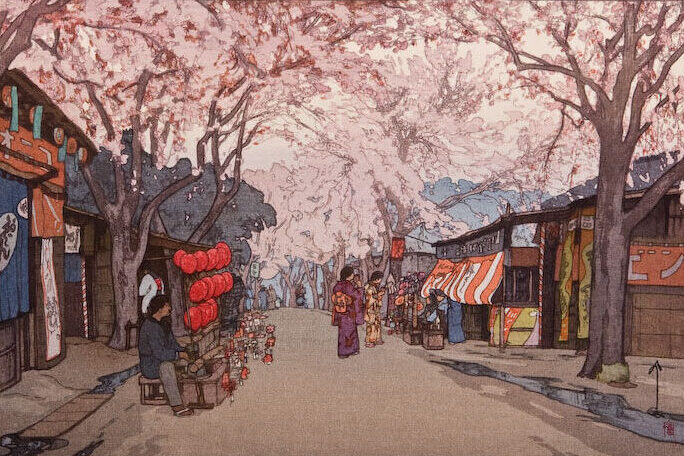
Last Updated: 15 Jul 2020 Why do Japanese take so long to make decisions?
“We’re missing out on opportunities.” “The market is passing us by.” “We are losing customers because we can’t respond quickly enough.” These are frequent concerns of Americans who work in Japanese companies, who fear that the slow pace of Japanese decision-making handicaps their ability to succeed in the U.S. marketplace. Why do Japanese companies seem to shoot themselves in the foot in this way? There must be a rational reason…
It’s hardly possible to pick up a newspaper or magazine without seeing a reference to the increasingly harried pace of life in the U.S. Technological and sociological changes have sped up product life cycles, shrunk people’s free time, and truncated their attention spans. Increasingly, speed is seen as the essential element for business success.
This acceleration of pace is happening in a society that already was more addicted to speed than many others. Americans historically have preferred to “get going” and “do now, talk later.” This was appropriate for settlers and pioneers who had to be practical and act fast in order to survive in harsh conditions. Cowboy culture also emphasized speed, giving us such colorful terms as “quick on the draw” and “shoot from the hip.” As the economy grew, everyone rushed to get ahead and achieve the American Dream in the competitive business environment. Companies focus their activities around quarterly results.
In contrast, Japanese culture evolved in a more stable setting. Rather than the rugged frontier of the U.S., Japan has been settled for over a thousand years. Life there revolved around the repetitive rhythms of rice agriculture, where things had to be done at the precise time, and could neither be hurried or postponed. Thus, Japanese are conscious of time and particularly deadlines, but tend not to feel the need to rush things unnecessarily. “Time is money” and “time is of the essence” are not phrases that are commonly used in Japanese. In more recent years, the heavy regulation and tendency toward oligopoly in the Japanese market have shielded Japanese from the need for fast changes.
Japanese decision-making processes and attitudes toward time have evolved in a stable environment, but now Japanese companies are forced to compete in an environment that is anything but stable. The traditional Japanese approach to change and decision-making is increasingly out of step with the demands of the environment. Deregulation has opened Japanese domestic markets to the fickle winds of international competition, so businesses can no longer count on an even keel atmosphere. Many of the high tech markets that Japanese companies are active in are being driven by the fast pace of the U.S. market. And as the Japanese economy remains in the doldrums, Japanese multinationals have more at stake in making their U.S. operations successful.
Based on my work as a consultant to major Japanese firms, I believe that the need to adapt slow-paced Japanese decision-making to a fast-moving environment is one of the most pressing issues determining their future success or failure.
In order to address this issue, first it is important to look at the background of the different U.S. and Japanese approaches.
Different risk propensities
Americans tend be comfortable taking risks and making mistakes. We would prefer to move quickly even if it means there is the possibility of making a mistake or failure. We believe that the potential for small errors is a tradeoff for speed. Besides, in the flexible U.S. environment, it’s easy to recover from a mistake. If a mistake is made, you simply “pick yourself up, dust yourself off, and start all over again,” in the spirit of “if at first you don’t succeed, try, try again.” Customers tend to practice “forgive and forget.” In comparison, Japanese society and business are less forgiving of errors. One slip-up and your company can have a nearly indelible black mark against it. Thus, Japanese act much more cautiously, and feel that it is worthwhile taking extra time in order to ensure that things work right the first time.
How decisions get made
In American companies, many decisions are made by individual managers, who have been given authority to make decisions on their own. An individual acting alone can make a decision quite quickly. On the other hand, in a Japanese organization, no one can make any decision on their own, no matter how small. Japanese believe that many heads are better than one, and that by having many people examine an issue you will achieve a better result.
Of course, some decisions in U.S. companies are made by groups of people. But the typical method is to gather everyone in a meeting and hash it out right then and there. That type of approach is unthinkable in Japan, being too rough and tumble and carrying too much potential for loss of face. Instead, the following two methods tend to be used. They take time, but serve to decrease the potential for risks and mistakes.
• Nemawashi. This term was originally a term from the world of Japanese gardening. Japanese gardeners observed that if they dug up a tree in one day and transplanted it, often the tree would go into shock and wither. So they developed a technique whereby, over the course of several days, they would give each portion of the roots special attention and loosen them from the soil gradually. After this transition period, the tree could be transplanted and would thrive. Eventually, this term started being used to refer to the getting of people on the bandwagon and smoothing the way for a decision. Nemawashi requires meeting one-on-one with key decision-makers, getting their input and asking for their support. It’s not a process that can be done quickly.
• Ringi. A ringi is a circulating proposal document. Any issue that will be decided is summarized in such a document, which is then routed to key decision-makers (who can number ten or more). Each of them has to study the document and sign off on it. Again, this is not a process that happens fast.
What’s an opportunity?
Americans and Japanese have different views of what constitutes an opportunity, which tends to lead to conflict about how quickly to move forward. Americans tend to see good opportunities as being time-limited. In the competitive U.S., if you don’t act quickly, a competitor can act first and you will have missed your chance. Americans will try to beat others to the punch and get the “first mover advantage” from being the market pioneer. (Software is a clear example of this – rushing products to market in order to be first, with version 1.0 still full of bugs!) Americans also believe that good opportunities don’t last forever. A term that is frequently used to describe market opportunities is “window of opportunity.” This term implies that the window won’t be open forever, that you had better get through it before it shuts.
In contrast, Japanese tend to feel that a good opportunity is an enduring one. There is no Japanese equivalent to the expression “window of opportunity.” If it’s something worth doing, the chance is not going to go away quickly. Japanese prefer to avoid latching onto fads, and instead seek to pursue only those opportunities that will prove to be lasting.
Attitudes toward change
Americans, as a people in a country that has a short history, tend to look forward. They are comfortable with change, and tend to take change in big leaps. While Japanese are also progress-oriented, they also value maintaining the good aspects of how things have been done before. They are reluctant to throw the baby out with the bath water, preferring to build on past successes. They also prefer more gradual change, which entails fewer risks.
What to do about it
The paragraphs above describe some of the cultural root causes of the gap between American and Japanese views of speed. The question is then, what can American and Japanese employees of Japanese organizations in the U.S. do to increase speed while not compromising the strengths of the Japanese approach? The following are recommendations on both the philosophical and practical level.
Philosophical
Japanese expatriates in the U.S. need to understand the nature of the U.S. market. They need to understand that the U.S. customer demands speed, and that fast U.S. competitors will leave slow movers in the dust. They need to make a commitment to reducing unnecessary delays. And, they need to educate the staff at the parent company about this important imperative of the U.S. market.
For their part, American businesspeople need to re-examine the assumption that speed is always better. For example, new research shows that it may be more beneficial to be a “fast follower” than a first mover. Fast followers can learn from the experience of the pioneer, and use “more powerful and cost-effective second-generation technology, more precise targeting, better pricing and so on.”* Is speed being demanded for speed’s sake, or can concrete advantages be pointed to? Rather than assuming that Japanese share the “faster is better” mindset of the U.S., develop persuasive arguments for why speed is needed. In some cases, in trying to make the argument for speed, including describing the pros and cons, you may realize that it’s not as important as you had assumed.
Practical
• Determine what’s slowing things down. Rather than making the blanket generalization that Japanese take a long time to decide things, investigate where the bottlenecks are. Collaborating with U.S.-based Japanese executives can be helpful in understanding this, since they will be able to shed light on how things work the parent company (where many bottlenecks occur). Once you have determined the root causes, develop plans for addressing them. The paragraphs below show some ways of dealing with common root causes.
• Streamline the decision-making process. Reducing the number of people needed to sign off on a given decision can cut the time needed to . Reviewing the approvals process can provide many clues for where unnecessary steps can be eliminated.
• Delegate more authority. Within the U.S. operation, this can mean increasing the monetary amount that an individual manager is allowed to sign off on without seeking approval from higher-ups. It can also mean the head office delegating more authority to the U.S. operation, so that more items can be decided without obtaining the approval of headquarters.
• Make sure language isn’t a problem. If you are sending queries to the parent company and waiting forever for answers, it’s possible that your missives are difficult for them to decipher. Risk-averse Japanese can prefer to do nothing rather than make a mistake, so your colleagues in Japan may hesitate to reply to something they don’t completely understand. Review your recent communications with Japan from the perspective of how easy they are for a non-native speaker to understand. Do you have a lot of long, complicated paragraphs? Are you using complicated grammar and a lot of slang and jargon? Try simplifying your writing style, and break up your writing with bullet points and lists. Just this change alone can have a big impact. If you make repeated requests of the same type, making a bilingual template can help your colleagues at head office react more quickly (and will also show that you are trying!)
• Give them the information they are looking for, in the format they want. As mentioned above, one of the reasons for the long decision-making process is to carefully eliminate all potential for risk. By the same token, Japanese will often stop in their tracks and not move forward with a decision if they are not sufficiently convinced of the rationale or that risk has been eliminated. You can potentially speed up decision-making by making sure that your reports and presentations are sufficiently convincing. This means that they need to include the information that your Japanese colleagues are looking for, in the format they want. It can be difficult, however, to get Japanese to explain what it is that they are looking for. Often, for them it’s more of a “I’ll know it when I see it, and I haven’t seen it yet” situation. You may need to send a list of possible additional types of information you can provide, and ask them which of those would be most helpful. You can also ask for copies of reports that they liked, which you can use as a model for content and organization.
* “Why Cell Phones Succeeded and Iridium Failed,” by Jagdish N. Sheth and Rajendra Sisodia, The Wall Street Journal, Agusut 23, 1999.
Related articles
The culture component and why it matters in management
Let me start with what might at first appear to be a personal story unrelated to cross-cultural mana
The different meanings of psychological safety in Japan, Europe and North America
The concept of “psychological safety” in the workplace started in the United States in the 1960s and
Too early for cherry blossoms!
Japan’s cherry blossom season is peaking at the earliest time since records began over 1,200 y




